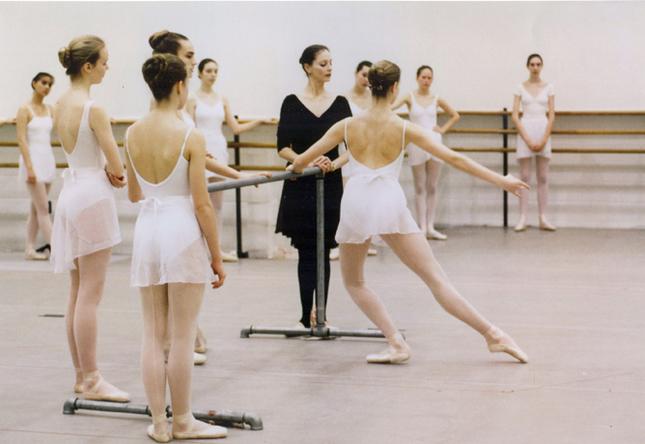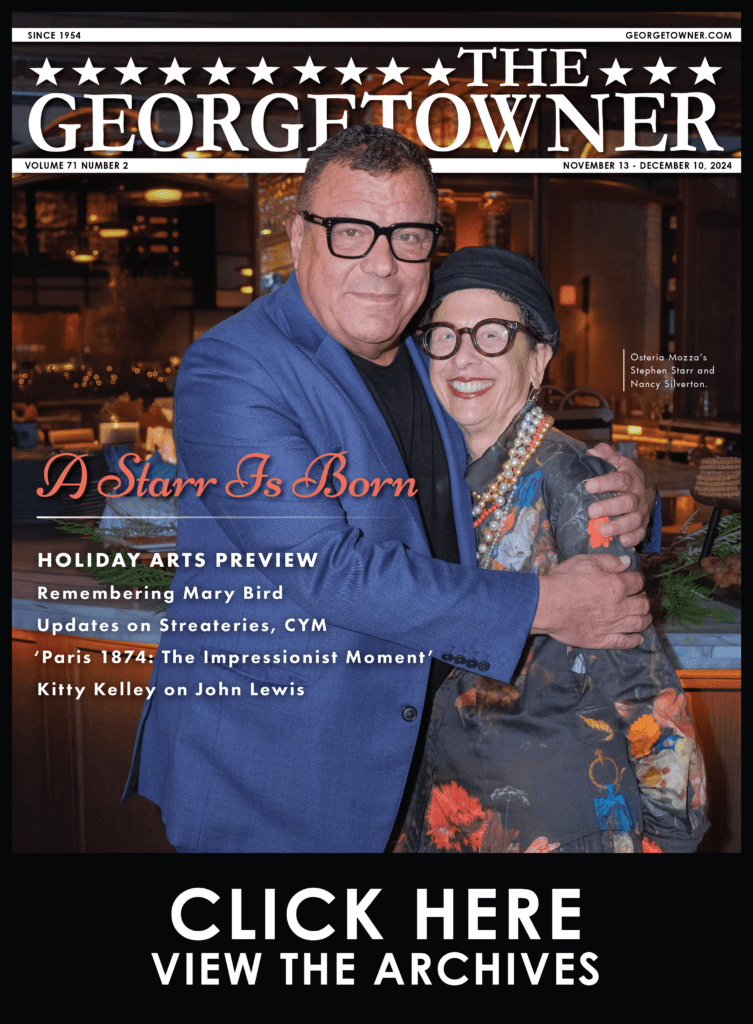Dancers are different from the rest of us. They’re not quite like gods, of course, or birds or anything magical exactly. Still, they are people who make magic in the way they move — to music, to be sure, but also otherwise. For this reason, among others, people want to dance, to learn how to dance and to be in the presence of dancers, whether as part of an audience or as part of a class taught by a dancer.
When that dancer and that teacher is Suzanne Farrell, that’s a special occasion. So last month, a bunch of people — regular folks, with backpacks, wearing tights or leotards, armed with ballet slippers and water bottles (some of them), young, middle-aged and older than that, girlish and boyish, men and women — paced or sat or twirled their thumbs inside the Hall of Nations at the Kennedy Center, waiting to be taken to a session of “Exploring Ballet with Suzanne Farrell for Adults.”
It was a mixed group: a young Asian woman from San Francisco with a lithe, dancer’s body; a middle aged man from Virginia who performs in Richmond; a youngish, muscular man; a red-haired woman who headed immediately for a barre in the rehearsal room which doubled as a classroom. There were only four or five men, this reporter among them.
Farrell arrived — she just sort of appeared. One moment she wasn’t there, and then she was, inconspicuous but noticeable. It is one of the magical abilities that dancers in their prime and thereafter have. On stage they seem to materialize out of nowhere, but in a way that you notice nonetheless. She is with a pianist and a dancer — bright-red hair, freckles, alabaster skin and long dancer’s legs — from the Suzanne Farrell Ballet, the Kennedy Center-based company that she founded and serves as artistic director.
What happens during the course of the hour-and-a-half master class seems, from my view, a performance. It’s all of a piece. Farrell puts everyone through their paces, trying increasingly complicated and difficult moves, turns, combinations. Thin, casually urging and urgent, reddish light-brown hair, blue eyes, Farrell has a gift for explaining and encouraging. She manages to instill a sense in the students that they might, at some point, take flight. Every step and section is begun with what seems like a mantra: “Preparation. Preparation is everything.” She whispers the word throughout until, days later, you find yourself saying it too at the oddest moments.
Farrell walks among them, correcting mistakes, making suggestions, nods of approval here, adjusting an arm there, talking in a soft tone, watching thoughtfully. She is all in the moment. Everyone is watching and listening, hoping for a few words that might act as a potion.
For many, Farrell in her heyday, as muse in the 1960s to George Balanchine, premier master and choreographer of American ballet, at New York City Ballet, was not just a great ballerina, but the ballerina. She still occupies an exalted space, partly because, perhaps more than any other female dancer, she merged with what Balanchine created; it was symbiosis, partnership, love and the imagination fused. She was tall, taller than most, and always seemed to become one with the music — almost any kind of music, from the triumphant, languorous classics to the jazzy struts of Duke Ellington’s “Sophisticated Ladies.”
“I felt myself, in terms of what I did and how I did, always in the service of the music,” she said. “This is what we do. Even before I danced for real, I loved listening to beautiful music.” Famously, she said that after she retired at 44 after 28 years as a dancer, “I couldn’t listen to beautiful music anymore. Because it made me want to dance, and I couldn’t.”
We sat down after the class. It seemed almost unnatural to be sitting like this, as if pinned to a chair. I thought she should be walking with those long legs, light as air, gesturing with fine fingers. She was kindness personified, saying that she had not expected me to last more than 10 minutes, as opposed to the half hour I stuck it out, clueless all the way.
“I love teaching,” she said. “To pass on the knowledge, to watch the attempt.” Teaching, the master classes, the ballet experience, directing the company, her company, are connections to her life’s blood. She told stories about learning, about dancing, about loons at a house by a beach and how they learned to nest farther out to avoid tides wrecking their nests. Metaphors about flight, air and flying trailed behind like breadcrumbs. In fact, the feathery title of her autobiography is “Holding On to the Air.”
“Exploring Ballet with Suzanne Farrell,” a three-week summer ballet intensive course for young dancers, will be offered July 25 to Aug. 13. The opening program, in October, of the Suzanne Farrell Ballet’s 2016-2017 season will include “Stars and Stripes,” Balanchine’s famed Sousa ballet, which she danced at age 16 on her first night as a member of New York City Ballet.


